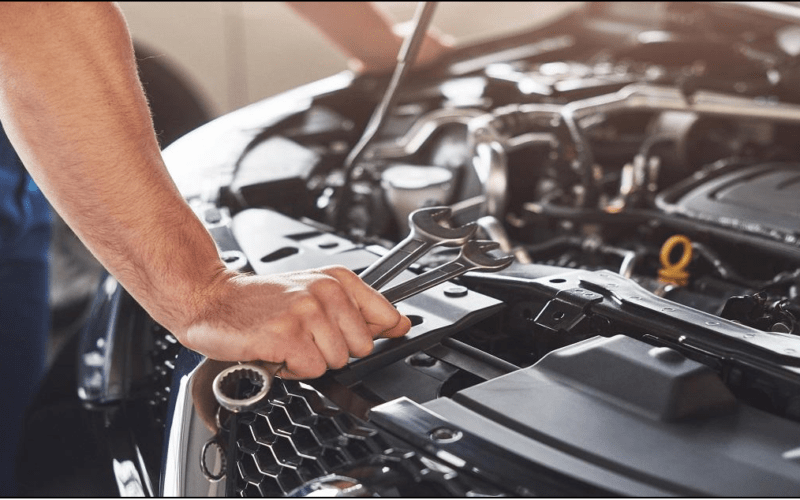
Planning for a holiday takes forward thinking; booking accommodation and researching places to visit are obvious considerations, but what about transport? You should check all the essential things about your car components. Thus, it would be best if you prepared a pre-trip checklist for the car to prepare for a long trip. A longer drive causes more strain on your vehicle’s mechanicals, so problems that might not be evident around town can become an issue at constant high speeds on the freeway. It’s also a good idea to find the cheapest fuel stations along your drive; first, check your vehicle’s service sticker and book car service Melbourne if it’s almost due, but there are also a lot of checks you can carry out yourself.
Before taking a road trip, travellers should ensure their vehicle is working. The following tips can help you how to prepare your car for a long road trip to provide the drivers ensure a safe journey:
Maintain tires
Tires are the only part of a car in direct contact with the road, so it is essential to inspect them frequently. Inspections should include checking tire inflation pressure and tread wear and looking for defects such as punctures or cracks. Tires should be replaced when they end their service life or show signs of damage, such as bulges or cracks.
Here are some of the critical considerations:
Air pressure
It is incredibly vital to ensure your vehicle is adequately equipped for a long drive. It will help if you look at the owner’s manual before heading out on the open road because the tire pressure varies depending on whether your vehicle is loaded or has a trailer. Check your owner’s manual to find out what type of tires your vehicle uses and what the cold tire pressure should be filled to, then use a simple gauge to measure the air pressure in each tire regularly.
Condition
A professional should check bulges, gouges, or other visual signs of damage to the tire to ensure that the tire’s structural integrity is not compromised. Even a minor impact from a curb or pothole can damage a tire. So, investing in quality maintenance services becomes crucial when you own a high-performing car like Audi. You should check with a professional mechanic for reliable Volkswagen service Glen Waverley if you notice uneven tread wear or other odd patterns on the tire.
Rotation
In a vehicle, the wheels that receive power often differ from those that do not. For example, some cars are rear-wheel drive, which means that the engine powers only the rear wheels. Tires on wheels that receive power (drive-wheel tires) wear out faster than non-drive-wheel tires. Also, loose or worn steering components can cause uneven wear of drive-wheel tires. Rotating tires move them front-to-back or side-to-side, promoting even wear among all four tires. If uneven wear is observed, this service should be performed every 5,000 miles or sooner. Many shops include tire rotation in their oil change specials.
Check fluid
Maintaining your vehicle’s fluids is essential to ensure a trouble-free summer road trip. Motor oil, coolant and transmission fluid are often referred to as the lifeblood of an engine. Modern vehicles use multiple specialised fluids vital to your vehicle’s operation and longevity.
Brake fluid
Fluid pressure forces the callipers to clamp the brake pads onto the rotors. Brake pedal sponginess or softness can indicate air in the brake lines, which requires bleeding. Brake fluid also gets contaminated and absorbs moisture, reducing braking effectiveness. Service should be performed according to your car manufacturer’s manual, or every 24,000 miles in everyday use. Your dealer or local automobile workshop can advise you on the best action plan if you notice reduced braking performance.
Power steering fluid
As more vehicles are produced with electric or electrically-assisted power steering systems, hydraulic power steering systems will continue to be used. Hydraulic power steering systems use fluid that can become contaminated over time. It results in hampering performance and possibly causing damage to the car system components. The fluid reservoir is generally located in a relatively easily accessible location under the hood, making it easy to check each vehicle’s engine oil changes.
Transmission fluid
Because many newer vehicles have sealed transmissions that do not permit access to the inside of the transmission, checking and topping off the fluid level is more complicated. However, it is still essential to understand how transmission fluid affects your vehicle’s performance. Depending on the car, a transmission service may be needed every 100,000 miles and will require special equipment or training to complete. Thus, look for an independent mechanic if you are unsure about your ability to complete this task.
Engine oil
The oil in an engine is its lifeblood. Without oil, there would be no lubrication and no protection from wear. The engine would ultimately fail. Most car engines come from the factory with a recommended service interval; if you have a new car, it may be several thousand miles before you need to check your oil. But checking your oil every 1,000 to 3,000 miles is still a good idea because even though additives in modern motor oil help protect your engine against wear and corrosion, they don’t last forever.
Routine maintenance
Fluid levels are essential, but there are many other vehicle maintenance considerations. The following should be performed regularly and are especially crucial before a very long trip:
Air filters
Most automobiles have two kinds of air filters. The engine air filter produces clean, debris-free air for the drive train, and the cabin air filter provides breathable air to the passenger compartment. If these filters are not replaced regularly, the vehicle will perform poorly, and the occupants could be exposed to hazardous airborne pollutants. Engine air filters should be replaced every 10,000 miles, while cabin filters may be replaced as often as every 15,000 miles, depending on the manufacturer’s recommendations.
Lighting
In addition to your car’s headlights, multiple bulbs inside the cabin may occasionally need checking and replacement. It is more irritating than trying to use an interior light after dark, only to discover that it has burned out. These are generally easy to replace and can be bought from any auto parts store in the country.
Belts and horses
One of the essential maintenance tasks on your vehicle is inspecting the serpentine belt. While there are exceptions, manufacturers now use a single ribbed belt to drive the alternator, air conditioning compressor, water pump, and other accessories. A glance or a visual inspection will reveal any cracks or fraying in the belt. While at it, check the hoses for signs of leakage at junction points.
Conclusion
When you’re driving a clean vehicle, you’ll see a fuel economy penalty if there’s enough added weight. To avoid this penalty, remove all the excess baggage to remove any extra weight. In addition, it will clear room for luggage and other items required for the road trip. But on top of everything, take a close look at this road trip checklist for preparing your car for your next long trip.





